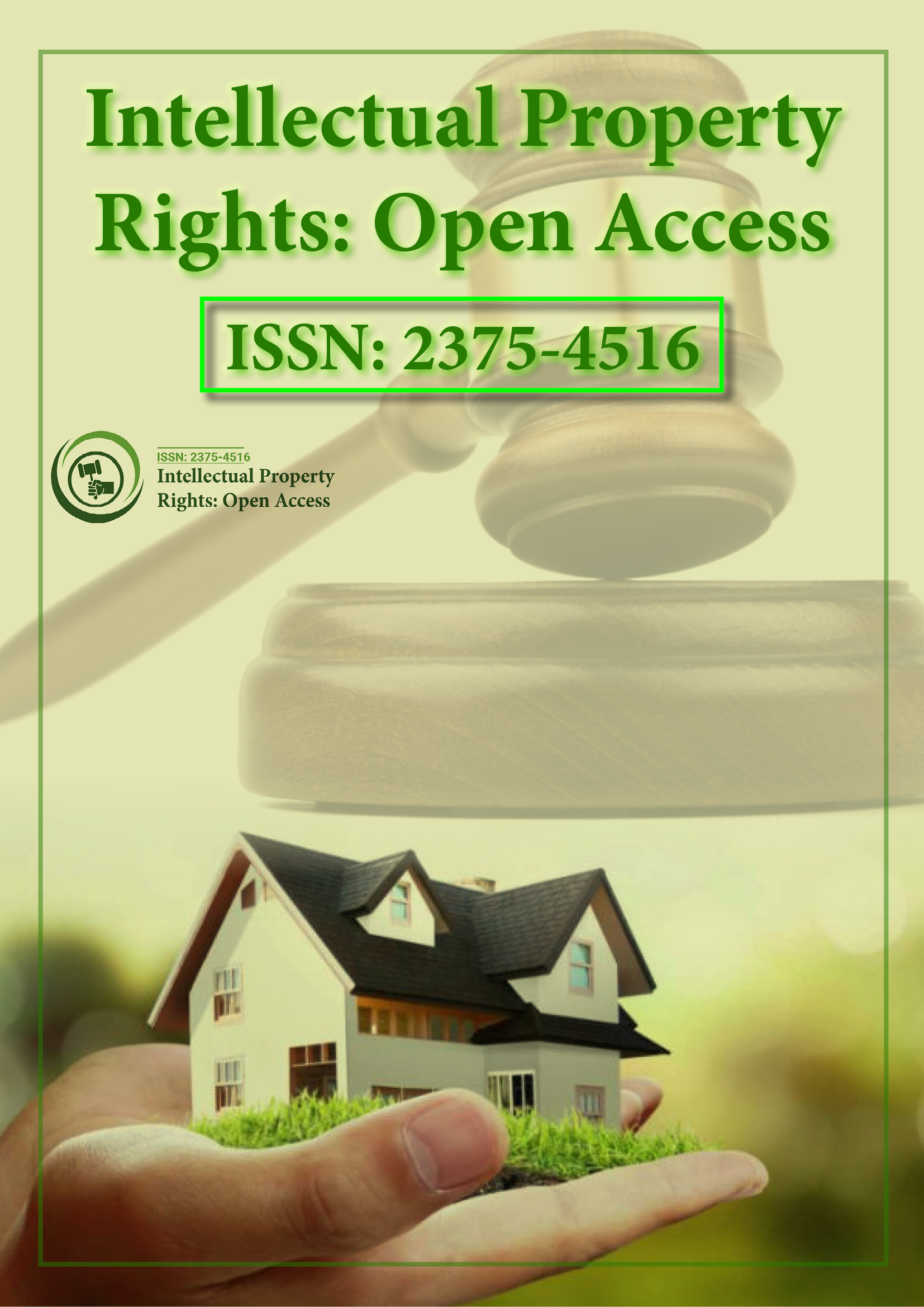Indexed In
- Open J Gate
- RefSeek
- Hamdard University
- EBSCO A-Z
- OCLC- WorldCat
- SWB online catalog
- Publons
Useful Links
Share This Page
Journal Flyer

Open Access Journals
- Agri and Aquaculture
- Biochemistry
- Bioinformatics & Systems Biology
- Business & Management
- Chemistry
- Clinical Sciences
- Engineering
- Food & Nutrition
- General Science
- Genetics & Molecular Biology
- Immunology & Microbiology
- Medical Sciences
- Neuroscience & Psychology
- Nursing & Health Care
- Pharmaceutical Sciences
Perspective - (2023) Volume 11, Issue 4
Preserving Cultural Heritage: Understanding Indigenous Intellectual Property
John Emest*Received: 24-Nov-2023, Manuscript No. IPR-23-24060; Editor assigned: 27-Nov-2023, Pre QC No. IPR-23-24060 (PQ); Reviewed: 12-Dec-2023, QC No. IPR-23-24060; Revised: 19-Dec-2023, Manuscript No. IPR-23-24060 (R); Published: 26-Dec-2023, DOI: 10.35248/2375-4516.23.11.245
Description
Indigenous Intellectual Property (IP) encompasses the traditional knowledge, cultural expressions, and innovations that originate from indigenous communities worldwide. Indigenous societies carry a diverse wealth of traditional narratives, artistic expressions, healing methods, farming practices, and various forms of wisdom that have been transmitted across generations.
At the core of the dissertation surrounding indigenous intellectual property rights lies the recognition of the unique relationship that indigenous communities have with their cultural heritage. This knowledge is deeply intertwined with spiritual beliefs, environmental practices, and communal identities, embodying a holistic understanding of the world that is often distinct from Western perspectives.
However, the protection and preservation of indigenous intellectual property face multifaceted challenges, often stemming from historical injustices, cultural appropriation, and inadequate legal frameworks. For centuries, indigenous knowledge has been exploited and appropriated without proper acknowledgment or compensation, leading to the erosion of cultural identities and the commodification of sacred traditions.
One of the fundamental issues in safeguarding indigenous intellectual property rights is the clash between traditional communal ownership and the Western concept of individual ownership. Indigenous knowledge is often collective, owned and shared by the community as a whole rather than by specific individuals. This communal aspect of knowledge transmission presents complexities within legal systems that predominantly recognize individual property rights.
Moreover, existing intellectual property laws, primarily designed to protect Western innovations and creations, often fail to accommodate the unique nature of indigenous knowledge. Patent, copyright, and trademark systems may not align with the communal and oral nature of indigenous traditions, leading to gaps in legal protection and recognition for indigenous communities.
The unauthorized use of indigenous knowledge, cultural symbols, and spiritual practices by outside entities for commercial purposes exacerbates the vulnerability of indigenous intellectual property. This exploitation not only leads to economic disparities but also undermines the spiritual and cultural significance of these traditions, often perpetuating harmful stereotypes and misrepresentations.
Efforts to address these challenges and protect indigenous intellectual property have gained momentum in recent years. Indigenous communities, alongside international organizations and advocates, have been working towards creating frameworks that respect and safeguard their knowledge and cultural expressions.
One notable approach involves advocating for sui generis systems or unique legal frameworks modified to protect indigenous intellectual property. These systems aim to incorporate indigenous perspectives, values, and customary laws within legal mechanisms to provide recognition and protection for traditional knowledge and cultural expressions.
Furthermore, initiatives promoting the documentation and preservation of indigenous knowledge have emerged, aiming to record oral traditions, traditional ecological knowledge, and cultural practices. These efforts not only help protect indigenous intellectual property but also contribute to the wider appreciation and understanding of diverse cultural heritages.
Collaborations between indigenous communities, researchers, and policymakers have led to the development of guidelines and protocols for respectful engagement with indigenous knowledge holders. These guidelines emphasize the importance of informed consent, benefit-sharing, and mutual respect in research, commercial partnerships, and cultural exchanges involving indigenous knowledge.
However, despite these advancements, significant challenges persist in the scope of indigenous intellectual property rights. Striking a balance between protecting indigenous knowledge and fostering innovation and cultural exchange remains a complex endeavor. Moreover, ensuring that legal protections effectively translate into solid benefits and empowerment for indigenous communities requires ongoing commitment and collaboration.
Conclusion
In conclusion, the protection of indigenous intellectual property is an essential aspect of preserving cultural heritage and respecting the rights and identities of indigenous communities. Efforts to recognize, respect, and protect traditional knowledge and cultural expressions are integral to fostering cultural diversity, promoting social justice, and upholding the rights of indigenous peoples. Embracing a holistic approach that values and incorporates indigenous perspectives within legal frameworks and societal practices is vital for safeguarding this invaluable heritage for generations to come.
Citation: Emest J (2023) Preserving Cultural Heritage: Understanding Indigenous Intellectual Property. Intel Prop Rights. 11:245.
Copyright: © 2023 Emest J. This is an open access article distributed under the terms of the Creative Commons Attribution License, which permits unrestricted use, distribution, and reproduction in any medium, provided the original author and source are credited.
